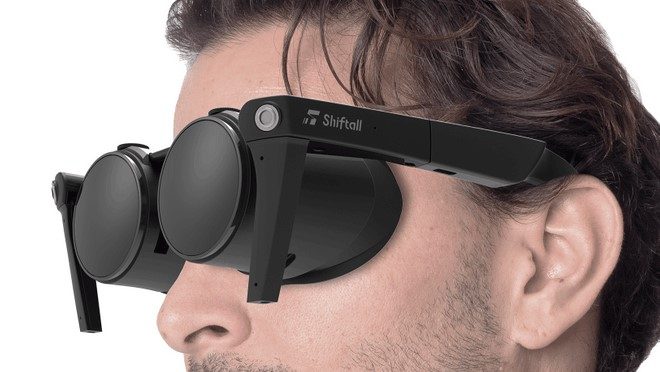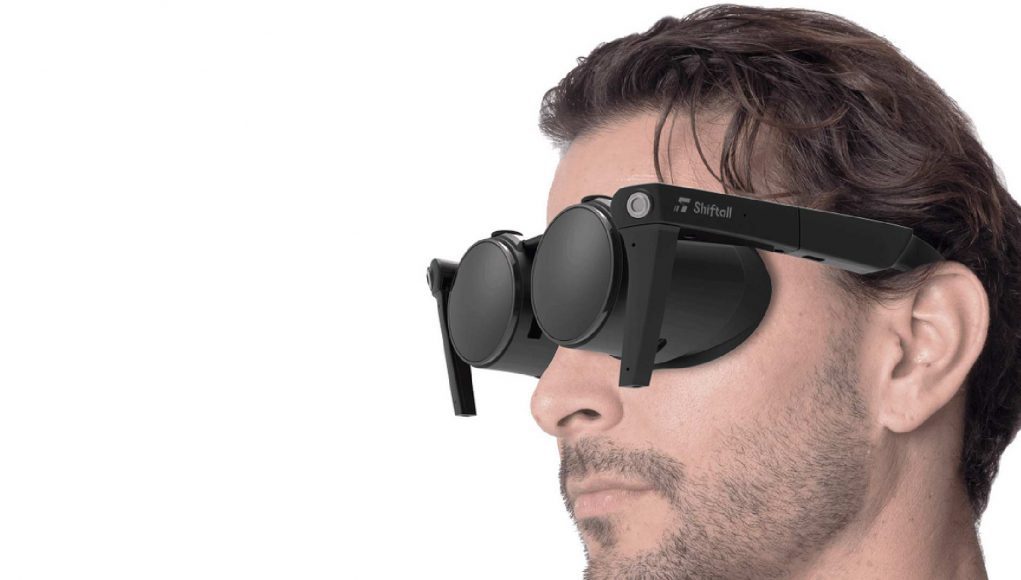Panasonic subsidiary Shiftall, the makers of SteamVR-compatible body tracking system HaritoraX, announced it’s releasing a lightweight consumer VR headset this year that includes OLED microdisplays and the ability to play SteamVR content. Called MeganeX, the low-profile, high-resolution headset is slated to launch sometime in Spring 2022, priced at around $900.
Unveiled at CES 2022, Shiftall’s MeganeX is said to include 1.3 inch OLED microdisplays which feature a 2,560 × 2,560 per-eye resolution, rated at 120Hz. The 6DOF headset features a foldable frame with built-in speakers, making for a compact package that weighs in at 250g, or around 8.8oz (without cable).
Pancake optics are included here too—a design element which Huawei and Pico have used in their respective prototype headsets, and which HTC has used to slim down its Vive Flow standalone headset.

Shiftall says MeganeX is focused on serving up SteamVR content, however it’s also said to include Qualcomm’s Snapdragon XR1 chipset—similar to Vive Flow. Here’s the full spec sheet Shiftall has shared so far:
- Display: 1.3inch OLED microdisplay 5.2K (2,560 × 2,560 per eye), 10bit HDR / 120Hz
- Weight: Approx. 250g (8.8oz) – Without cable
- Processor: Snapdragon XR1 platform
- Tracking system: 6DOF, camera based inside-out head tracking
- Connection: DisplayPort Alternate Mode on USB-C or DisplayPort + USB2.0 – Connect with the interface conversion box (included in package)
- Estimated Price: Less than $900
Tech analyst and YouTuber Brad Lynch (aka ‘SadlyItsBradley’) says in a hands-on at CES 2022 that both clarity and brightness are “actually pretty good,” and further correctly guessed at the inclusion of Kopin microdisplays. Shiftall says those are also Kopin-made pancake optics, in case you were wondering.
Lynch’s admittedly quick assessment on the show floor is encouraging to hear, as pancake optics typically present drawbacks when it comes to optical efficiency, requiring brighter displays to overcome disturbances caused by its polarized elements, which reflect light back and forth.
Both specs-wise and in physical appearance, Shiftall’s MeganeX feels very similar to Panasonic’s compact VR glasses revealed at a special event last year in Japan which coincided with the all-digital CES 2021. Those included Kopin microOLEDs providing a 2,560 × 2,560 per-eye resolution too.
One of the biggest missing pieces is field of view (FOV) however. Kopin says in a prior announcement for its first all-plastic ‘P95’ pancake optics, that when paired with its own Kopin’s 1.3 inch 2,560 × 2,560 microOLED it can provide around a 95-degree FOV.
Acquired by Panasonic in 2018, Shiftall focuses primarily on niche consumer devices, many of which feel like contenders for SkyMall. Its IMU-based body tracking system, HaritoraX, has been on the Japanese market for some time now though, which better positioned the company to dive deeper into the world of XR hardware development. Besides MeganeX, Shiftall is bringing two more immersion gadgets to global markets with the help of parent company Panasonic this year.
Alongside MeganeX, Shiftall also announced Pebble Feel, a wearable body cooling and heating device worn on your back, and Mutalk, a microphone that’s supposed to suppress outside noise as well as muffle the user’s own speech to those nearby in their physical space—both ideal candidates for VRChat, NeosVR or any other fairly open social VR app that supports niche hardware such as haptic vests. Both Pebble Feel and Mutalk are slated to launch in 2022, both priced at “around $200”.







